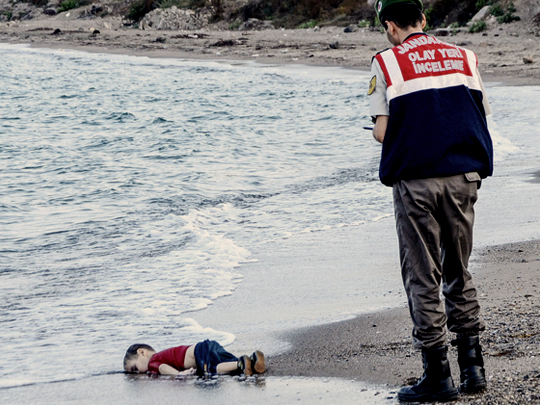Flickr / CC-BY-SA-3.0 / GFDL
1 – The European Immigration Crisis Intensifies
The European migrant crisis began in 2015, with high numbers of people arriving in Europe from across the Mediterranean Sea or through Southeast Europe.
Most of the migrants came from Muslim-majority countries in the Middle East and Africa. Drought, poverty, and violence linked to human-caused global warming have accelerated large-scale migration to Europe from these areas.
The tragic image of a 3-year old Syrian refugee, Alan Kurdi (pictured above), lying dead on a beach made global headlines after he drowned on 2 September in the Mediterranean Sea. He and his family were trying to reach Europe amid the European refugee crisis.
According to the United Nations High Commissioner for Refugees, the top three nationalities of the over one million Mediterranean Sea arrivals between January 2015 and March 2016 were Syrian, Afghan and Iraqi.
Of the migrants arriving in Europe by sea in 2015, 58 percent were males over 18 years of age, 17 percent were females over 18 and the remaining 25 percent were under 18.
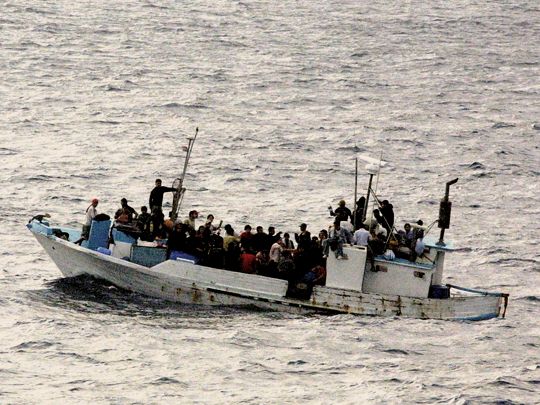
The number of deaths at sea rose to record levels in April 2015, when five boats carrying almost 2,000 migrants sank in the Mediterranean Sea, with a combined death toll estimated at over 1,200 people.
Most Syrian refugees were hosted in neighboring countries, but the number of asylum applications lodged by Syrian refugees in Europe has reached over 1 million, with over 5.5 million registered Syrian refugees worldwide.
The events took place amid ongoing conflicts and refugee crises in several Asian and African countries. By 2016, the total number of forcibly displaced people worldwide was almost 66 million, the highest level since World War II.
The number of people crossing EU borders illegally has fallen from 1.8 million in 2015 to just above 200,000 in 2017.
2 – The Charlie Hebdo & Bataclan Attacks
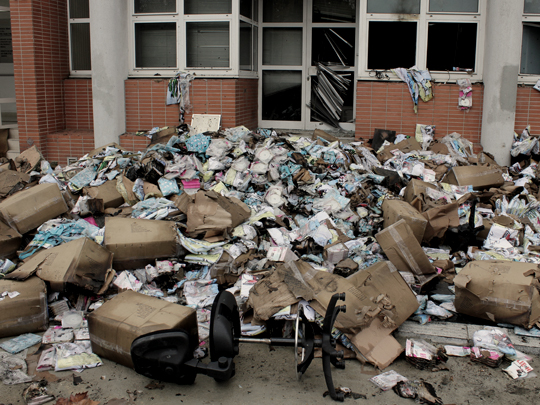
On the morning of 7 January 2015, two brothers, Saïd and Chérif Kouachi, forced their way into the offices of the French satirical weekly newspaper Charlie Hebdo in Paris.
Armed with rifles and other weapons, they killed 12 people and injured 11 others. The gunmen identified themselves as belonging to the Islamist terrorist group Al-Qaeda’s branch in Yemen, which took responsibility for the attack.
The motive for the attack is considered to be the controversial depictions of Muhammad in Charlie Hebdo. Their cartoons had previously made jokes about Islamic leaders, as well as the Islamic prophet Muhammad.
France raised its Vigipirate terror alert and deployed soldiers, leading to a major manhunt for the suspects.
They tracked down the brothers to a signage company in Dammartin-en-Goële on 9 January, where they had taken hostages. The men were shot dead when they emerged from the building shooting at the police.
Between 7-9 January, there were a number of related attacks in the Île-de-France region in central France.
Most notably, a siege in a Hypercacher kosher supermarket in Porte de Vincennes, where a terrorist kept 19 hostages and murdered 4 Jewish people. Police ended the siege by storming the store and killing the gunman, who had pledged allegiance to ISIS.
On 11 January, about two million people and more than 40 world leaders, met in Paris for a rally of national unity, with 3.7 million people joining demonstrations across France.
The phrase Je Suis Charlie became a common slogan of support at the rallies and on social media. The following print issue of Charlie Hebdo print ran 7.95 million copies in six languages, compared to its usual print run of 60,000 in only French.
BATACLAN ATTACK

On 13 November 2015, a series of coordinated terrorist attacks were carried out in Paris, France, and the city’s northern suburb, Saint-Denis.
Shortly after 9 pm, three suicide bombers struck outside the Stade de France in Saint-Denis, during a football match between France and Germany. This was followed by several mass shootings and a suicide bombing, at cafés and restaurants.
Gunmen carried out a mass shooting and took hostages at an Eagles of Death Metal concert in the Bataclan theatre. The attackers were shot or blew themselves up when police raided the theatre.
In total, the attackers killed 130 people, including 90 at the Bataclan theatre, while 413 people were injured, almost 100 seriously. Seven of the attackers were also killed. The attacks were the deadliest in France since World War II.
ISIS claimed responsibility for the attacks, saying that it was retaliation for the French airstrikes on ISIS targets in Syria and Iraq.
Most of the Paris attackers had French or Belgian citizenship, two were Iraqis, and some had fought in Syria, entering Europe among the flow of migrants and refugees.
On 15 November, France launched the biggest airstrike in the anti-ISIS bombing campaign, striking ISIS targets in Raqqa.
On 18 November, the suspected lead operative of the attacks, Abdelhamid Abaaoud, was killed in a police raid in Saint-Denis, along with two others.
3 – Gunman Kills 38 Tourists at Beach Resort in Sousse, Tunisia

On 26 June 2015, a mass shooting occurred at a tourist resort in Port El Kantaoui, about 10 kilometers north of the city of Sousse, Tunisia.
The five-star Riu Imperial Marhaba Hotel was hosting 565 guests mainly from Western Europe. Tourists from the hotel, as well as the nearby Soviva Hotel, went to the beach to swim and sunbathe.
At around noon, Seifeddine Rezgui Yacoubi, disguised as a tourist, took out a Kalashnikov assault rifle concealed in a beach umbrella and fired at the tourists on the beach.
Yacoubi then entered the hotel, shooting at any tourists he came across, prior to being killed by security forces.
In total, 38 people were killed, with a further 39 wounded. The nationalities of the deceased were 30 British, 3 Irish, 2 German, 1 Belgian, 1 Portuguese & 1 Russian.
It was the deadliest non-state attack in the history of modern Tunisia and received widespread condemnation around the world.
A 2017 inquest found the police response was “at best shambolic and at worst cowardly” after officers in the vicinity were found to be hiding or running in the opposite direction to the attacker.
A security team nearby, armed with assault rifles and wearing protective vests, retreated to wait for reinforcements for half an hour, during which time the gunman killed the 38 victims.
4 – Cuba and the U.S. Restore Full Diplomatic Relations for the First Time Since 1961
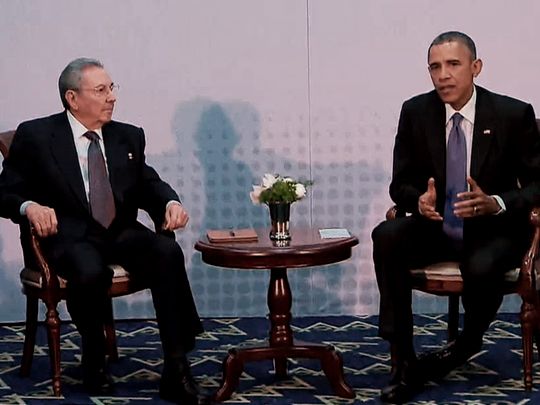
On 17 December 2014, U.S. President Barack Obama and Cuban President Raúl Castro announced the beginning of a process of normalizing relations between Cuba and the United States, ending a 54-year stretch of hostility between the nations.
The normalization agreement was secretly negotiated in preceding months, facilitated by Pope Francis and largely hosted by the Government of Canada. Meetings were held in both Canada and the Vatican City.
The agreement would see the lifting of some U.S. travel restrictions, fewer restrictions on remittances, U.S. banks’ access to the Cuban financial system, and the reopening of the U.S. embassy in Havana and the Cuban embassy in Washington.
The embassies had both been closed since 1961 after the collapse of diplomatic relations as a result of Cuba’s close alliance with the USSR.
On 14 April 2015, the Obama administration announced that Cuba would be removed from the United States State Sponsors of Terrorism list. Cuba was officially removed on 29 May 2015.
In March 2016, Barack Obama became the first U.S. President to visit Cuba since 1928.
However, in June 2017, U.S. President Donald Trump announced that he was canceling the Obama administration’s deals with Cuba, expressing that a new deal could be negotiated between the Cuban and U.S. governments.
On 8 November 2017, it was announced business and travel restrictions that were loosened by the Obama administration would resume and would go into effect the following day.
On 4 June 2019, the Trump Administration announced a full ban on any cruise ship, private yacht or plane travel to Cuba.
5 – Rebels Take Over Yemen Capital
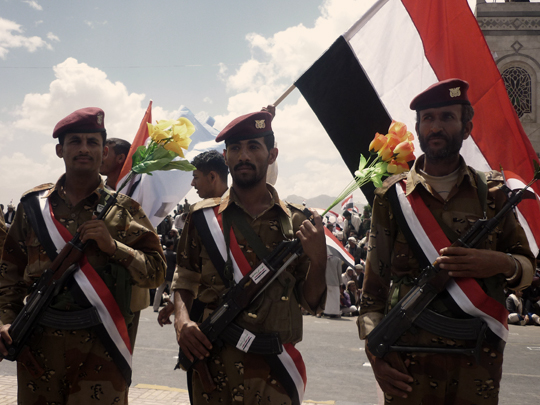
The Houthi takeover in Yemen was an armed takeover by the Houthis and supporters of former Yemeni President Ali Abdullah Saleh that pushed the Yemeni government from power.
The unrest began on 18 August 2014 as the Houthis called for mass protests, having been angered over the removal of fuel subsidies by the government.
On 21 September 2014, the situation escalated when the Houthis stormed the Yemeni capital Sana’a, causing the resignation of Prime Minister Mohammed Basindawa.
Ultimately, it led to the resignation of President Abdrabbuh Mansur Hadi and his ministers on 22 January 2015 after Houthi forces seized the presidential palace, residence, and key military installations.
After gaining control over government buildings in Sana’a, the Houthis and government signed a UN-brokered deal to form a unity government.
Weeks later, the Houthis declared parliament to be dissolved and installed a Revolutionary Committee as the interim authority. They later agreed to keep the House of Representatives in place as part of a power-sharing agreement.
The Houthi-led interim authority has been rejected by other internal opposition groups and has not been recognized internationally.
In March 2015, a Saudi Arabian-led intervention began with airstrikes and a naval blockade with the stated goal of restoring Hadi’s government to power.
Reports by the UN and UNICEF in 2016 & 2017 have stated up to 500,000 Yemenese children were on the verge of starvation, 7.5 million children needed medical care, and up to 7 million people were facing severe food shortages.
6 – Iran Agrees to Historic Nuclear Deal
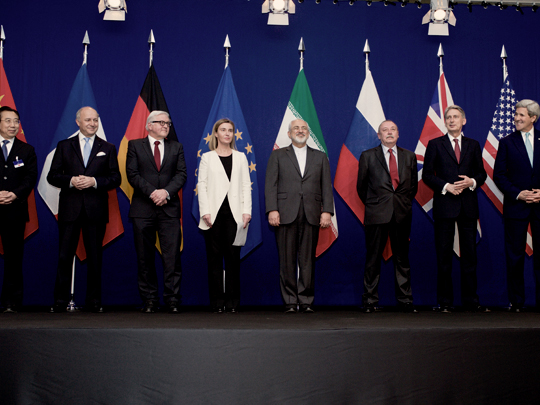
The Iran nuclear deal framework was a preliminary framework agreement reached in 2015 between the Islamic Republic of Iran and a group of world powers (USA, UK, Russia, France, China, Germany, and the European Union).
Negotiations for a framework deal over the nuclear program of Iran took place between the foreign ministers of the countries at a series of meetings held from 26 March to 2 April 2015 in Lausanne, Switzerland.
On 2 April, a press conference was held to announce the eight parties had reached an agreement on a framework deal.
The framework deal was embodied in a document published by the EU’s European External Action Service and in a document published by the U.S. Department of State.
On 14 July 2015, the Joint Comprehensive Plan of Action (JCPOA), a comprehensive agreement based on the April 2015 framework, was reached in Vienna, Austria.
Under JCPOA, Iran agreed to eliminate its stockpile of medium-enriched uranium, cut its stockpile of low-enriched uranium by 98%, and reduce by about two-thirds the number of its gas centrifuges for 13 years.
Iran also agreed not to build any new heavy-water facilities for the same period of time. Uranium-enrichment activities would be limited to a single facility using first-generation centrifuges for 10 years.
To monitor and verify Iran’s compliance with the agreement, the International Atomic Energy Agency (IAEA) would have regular access to all Iranian nuclear facilities.
The agreement provided that in return for verifiably abiding by its commitments, Iran would receive relief from U.S., European Union, and United Nations Security Council nuclear-related sanctions.
On 8 May 2018, United States President Donald Trump announced the United States was withdrawing from the deal.
In May 2019, the IAEA certified that Iran was abiding by the main terms of the deal, though questions were raised about how many advanced centrifuges Iran was allowed to have, as that was only loosely defined in the deal.
7 – ISIS Destroys Ancient Temple in Palmyra
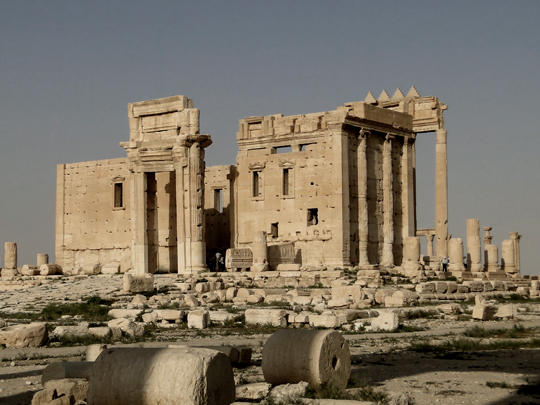
Deliberate destruction and theft of cultural heritage across Iraq, Syria, and parts of Libya by ISIS began in 2014.
The destruction targeted various places of worship and ancient historical artifacts. Valuable items from buildings were looted in order to smuggle and sell them to finance ISIS activities.
The ISIS offensive in May 2015 to capture Palmyra was one of the largest offensives they launched during the Syrian Civil War.
A World Heritage Site, the ruins of Palmyra were part of a desert oasis that was one of the most significant cultural centers of the ancient world, linking the civilizations of Persia, India, China with the Roman Empire through trade.
ISIS proceeded to demolish the ancient Lion of Al-lāt statue, among numerous others and blew up the 1st-century Temple of Baalshamin and the Temple of Bel with explosives. Satellite imagery of the site taken afterward showed almost nothing remained.
The last phase of destruction occurred between August and September, including the destruction of the 2nd-century AD Tower of Elahbel. The ancient tombs of Iamliku and Atenaten and the Monumental Arch were also destroyed.
When Palmyra was recaptured by Syrian government forces in March 2016, retreating ISIS fighters also blew up parts of the 13th-century Palmyra Castle, causing extensive damage.
Among the many places destroyed by ISIS, they also demolished the Parthian/Roman city of Dura-Europos, which had been nicknamed “the Pompeii of the desert”, due to its huge archaeological significance.
Hatra, a large fortified Iraqi city and capital of the first Arab Kingdom, had withstood invasions by the Romans in A.D. 116 and 198 thanks to its high, thick walls reinforced by towers.
The remains of the city were a testament to the greatness of its civilization. In March 2015, ISIS began demolishing the ruins of Hatra, bulldozing them and using explosives. They also similarly devastated Nimrud, an Assyrian city from the 13th century BC.
The toll of the destruction is incalculable, with countless priceless artifacts, archaeological sites, and cultural heritage gems demolished.
In addition to the millions of lives ruined, ISIS has forever changed the landscape of some of the oldest civilizations on Earth.
8 – U.S. Airstrike Hits Hospital Run by Doctors Without Borders in Kunduz, Afghanistan
On 3 October 2015, a United States Air Force gunship attacked a Trauma Centre operated by Doctors Without Borders (Médecins Sans Frontières) in the city of Kunduz, northern Afghanistan.
The hospital was hit several times during the attack, and the building was partially destroyed. The attack continued for 30 minutes after Doctors Without Borders staff contacted the U.S. and Afghan officials during the strike.
It is estimated at least 42 people were killed, with over 30 other people injured.
Doctors Without Borders said all warring parties had been notified of the hospital’s location. The group condemned the incident, calling the airstrike deliberate, a breach of international humanitarian law and a war crime.
The U.S. military initially said the airstrike was carried out to defend U.S. forces on the ground, but later said the airstrike was requested by Afghan forces who had come under Taliban fire.
The United States commander in Afghanistan, General John F. Campbell said the attack was a mistake and that they would never intentionally target a protected medical facility.
NBC News reported through Defense Department sources alleging that cockpit recordings showed the crew to be questioning the legality of the strike.
On 7 October 2015, U.S. President Barack Obama issued an apology and announced the United States would be making condolence payments to the families of those killed in the airstrike.
Subsequently, three investigations of the incident were conducted by NATO, a joint United States-Afghan group, and the United States Department of Defense.
A report released by the Pentagon on 29 April 2016, called the incident an accident, and that it, therefore, did not amount to a war crime. Sixteen U.S. military personnel were disciplined as a result of the investigation, though none were criminally charged.
Doctors Without Borders called for an international and independent probe, saying those who carried out the airstrike could not conduct an impartial investigation of their own actions.
9 – Multiple Bombings Kill Dozens in Turkey’s Capital
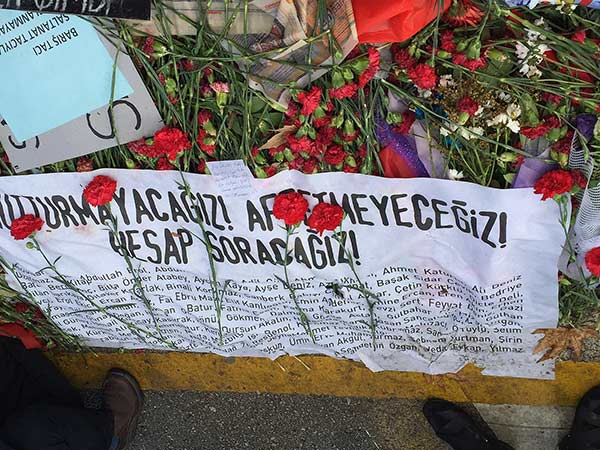
On the morning of 10 October 2015 in the Turkish capital Ankara, two bombs were detonated outside Ankara Central railway station.
A death toll of 109 civilians and over another 500 injured, made it the deadliest terror attack in modern Turkish history. No organization claimed responsibility for the attack.
Censorship monitoring group Turkey Blocks identified nationwide slowing of social media services in the aftermath of the blasts. Human Rights Watch described this as an extrajudicial measure to restrict independent media coverage of the incident.
The bombs appeared to target a Labour, Peace, and Democracy rally organized by the Turkish Trade Unions, Leftist and pro-Kurdish activists.
The march was being held to protest against the growing conflict between the Turkish Armed Forces and the Kurdistan Workers’ Party.
The governing Justice and Development Party, the main opposition Republican People’s Party and the Nationalist Movement Party condemned the attack, calling it an attempt to cause division.
On 19 October, one of the two suicide bombers was identified as the brother of the perpetrator of the Suruç bombing, where 33 people had been killed in July 2015. Both brothers had links to ISIS and ISIS-affiliated groups.
10 – Ireland Becomes the First Country to Legalize Same-Sex Marriage in a National Referendum
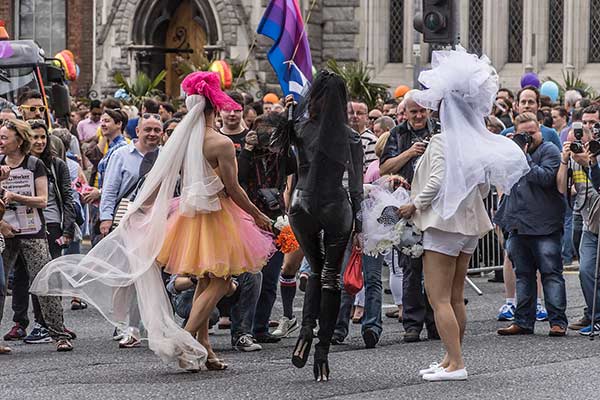
A referendum passed on 22 May 2015 amended the Constitution of Ireland to provide that marriage is recognized irrespective of the sex of the partners.
Ireland voted by a huge majority, with 62% of the electorate voting to legalize same-sex marriage. It made Ireland the first country in the world to do so by popular vote
In a vote hailed as a social revolution, a country once dominated by the Catholic church ignored the instructions of its cardinals and bishops. The huge Yes vote was welcomed around the world.
The measure was signed into law by the President of Ireland as the Thirty-fourth Amendment of the Constitution of Ireland on 29 August 2015.
The Marriage Act 2015, passed by the Irish parliament on 22 October 2015 and signed into law on 29 October 2015, giving legislative effect to the amendment.
Marriages of same-sex couples in Ireland began being recognized from 16 November 2015, and the first marriage ceremonies of same-sex couples in Ireland took place on 17 November 2015.
11 – The Rohingya Refugee Crisis
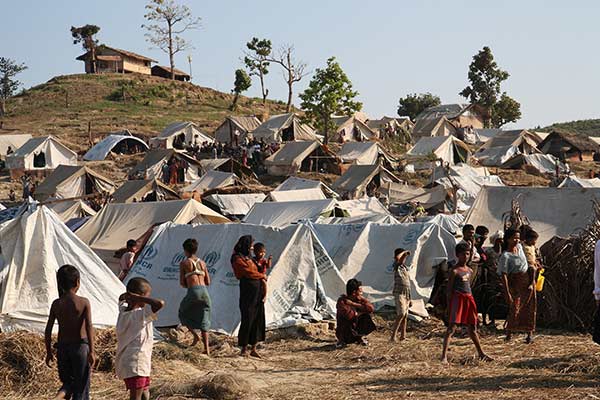
The Rohingya refugee crisis refers to the mass migration of people from Myanmar beginning in 2015. They were collectively dubbed “boat people” by international media.
The majority fled to Southeast Asian countries including Bangladesh, Malaysia, Indonesia, and Thailand by rickety boats via the Strait of Malacca and the Andaman Sea.
The United Nations High Commissioner for Refugees estimates that 25,000 people were taken to boats by migrant smugglers from January to March in 2015.
There have been reports that as many as 300 Rohingya died on their journeys after being abandoned at sea by the traffickers.
In October 2015, researchers from the International State Crime Initiative released a report drawing on leaked government documents revealing an increasing “ghettoization, sporadic massacres, and restrictions on movement” on Rohingya peoples.
They suggested the Myanmar government are in the final stages of an organized process of genocide against the Rohingya and called upon the international community to redress the situation.
